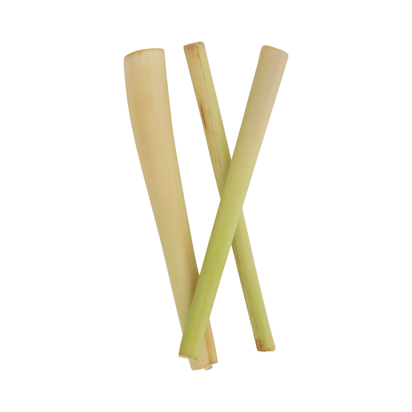Lemongrass: Important Facts, Health Benefits, and Recipes
Explore the world of lemongrass, its health benefits, and culinary uses in our ultimate guide, and learn how to incorporate this aromatic powerhouse into your meals.

Best Lemongrass Recipes
-

-

-
:max_bytes(150000):strip_icc()/thai-massaman-chicken-curry-3217276-hero-01-905b78a814b74565aac9d7285666dfa6.jpg)
-
:max_bytes(150000):strip_icc()/vietnamese-noodle-salad-with-lemongrass-beef-3030400-hero-01-39d2b00f3e71467ca4615407cd8650dd.jpg)
-
:max_bytes(150000):strip_icc()/__opt__aboutcom__coeus__resources__content_migration__serious_eats__seriouseats.com__recipes__images__2015__06__20150530-Banh-Mi-Panzanella-Dressed-Morgan-Eisenberg-c64b38bf1e9244d3b05df05777c637c8.jpg)
-
:max_bytes(150000):strip_icc()/__opt__aboutcom__coeus__resources__content_migration__serious_eats__seriouseats.com__recipes__images__2013__01__cherry-bitters-b0195c6b2ebe47cb870666d2d0b5a3d8.jpg)
-

-
:max_bytes(150000):strip_icc()/__opt__aboutcom__coeus__resources__content_migration__serious_eats__seriouseats.com__recipes__images__2013__09__093013-267916-cook-the-book-spicy-pork-larb-salad-9793fcfea08b42d091f15b85eef892f1.jpg)
-
![Thai Red Coconut Curry Popcorn Recipe Image]()
-
![Yellow Curry Paste Recipe Image]()
-
![Thai Tom Yum Chicken Recipe Image]()
-
![Thai Fish Green Curry Recipe Image]()
-
![Vegan Thai Tofu Satay Recipe Image]()
-
![Salmon and Avocado Chirashi (Mixed) Sushi Image]()
-
![Marinated Thai Beef Satay Recipe Image]()
-
![Thai Fish Curry With Vegetables Recipe Image]()
-
![Turmeric Tea Image]()
-
![Thai Grilled Chicken Salad Recipe Image]()
-
![Thai Pumpkin and Coconut Milk Soup Recipe Image]()
-
![Thai Jungle Curry Recipe From Chiang Mai Image]()
-
![Honey-Garlic Grilled Chicken and Marinade Recipe Image]()
-
![Mexican-Style Shrimp Ceviche Recipe Image]()
-
![Grilled Salmon with Thai Lemongrass-Coconut Sauce Image]()
-
![Thai Drunken Fish Recipe (Pad Kee Mao) Image]()
-
-
![Quinine-Free Tonic Syrup Recipe for Homemade Tonic Water Image]()
-
![Viet-Cajun Crawfish Recipe | Houston, TX Image]()
-
![Lemongrass Chicken Noodle Bowls Image]()
-
![Andy Ricker's Kaeng Khiaw Waan Luuk Chin Plaa (Green Curry With Fish Balls and Eggplant) From 'Pok Pok' Image]()
-
![Bánh Tráng Nướng (Grilled Vietnamese Rice Paper With Egg, Pork, and Condiments) Recipe Image]()
-
![Beef Short Rib Rendang Recipe Image]()
-
![Fast Sour Beer Recipe Image]()
-
![Balinese Pork Satay (<em>Sate Babi</em>) With Sweet Soy Glaze and Peanut Sauce Recipe Image]()
-
![Khao Piak Sen (Lao Chicken Noodle Soup) Recipe Image]()
-
![Nam Prik Ong (Thai Pork-and-Tomato Chile Dip) Recipe Image]()
-
![Prik Gaeng Panang (Thai Panang Curry Paste) Recipe Image]()
-
![Red Curry-Rubbed Grilled Halibut With Curry Vinaigrette Recipe Image]()
-
![Prik Gaeng Khiao Waan (Thai Green Curry Paste) Recipe Image]()
-
![Baked Sole With Cream Sauce Recipe Image]()
-
![Chicken With Mornay Sauce and Parmesan Cheese Recipe Image]()
-
![Stuffed London Broil Recipe Image]()
-
![Dracula's Kiss Cocktail With Black Cherry Vodka Recipe Image]()
-
![Prik Gaeng Massaman (Thai Massaman Curry Paste) Recipe Image]()
-
![Prik Gaeng Garee (Thai Yellow Curry Paste) Recipe Image]()
-
![Prik Gaeng Pak Dtai (Southern Thai Curry Paste) Recipe Image]()
-
![Gaeng Om Gai (Isan-Style Herbal Curry with Chicken and Dill) Recipe Image]()
-
-


:max_bytes(150000):strip_icc()/__opt__aboutcom__coeus__resources__content_migration__serious_eats__seriouseats.com__recipes__images__2015__01__20150126-popcorn-flavors-2-daniel-gritzer-10-f5d82f71cd3b47a08463fde4760282cd.jpg)

:max_bytes(150000):strip_icc()/tomyumchicken640-56a949c05f9b58b7d0f9eb27.jpg)
/fishcurrygreen640-570fe9d25f9b588cc262b80a.jpg)
/baked-tofu-in-thai-peanut-sauce-3378127-hero-01-46b7e8438b4e467c8c098f59e869dddc.jpg)
/SalmonAvocadoChirashi_JudyUng-56dbcfd05f9b5854a9ed7cfa.jpg)
:max_bytes(150000):strip_icc()/185288182-56a949605f9b58b7d0f9e95f.jpg)
:max_bytes(150000):strip_icc()/thai-curry-with-fish--vegetables-and-rice-in-red-bowl-174641098-596522275f9b583f18158703.jpg)
:max_bytes(150000):strip_icc()/turmeric-tea-recipe-3376435-080-cd2d010456ad4c71bcaa00d032a48f8a.jpg)
:max_bytes(150000):strip_icc()/thaichickensalad700-56a949ad3df78cf772a5729a-5c47ce4b46e0fb0001ef8380.jpg)
:max_bytes(150000):strip_icc()/thai-pumpkin-coconut-soup-recipe-3217690-hero-01-9adf021b0db74d08afb7b7bdcb075460.jpg)
:max_bytes(150000):strip_icc()/thai-jungle-curry-from-chiang-mai-3217283-Hero-03-95fd47f732d6467dbaa94763b99c9250.jpg)
/GettyImages-693459616-cfc093377ca244668c6ace126af204bf.jpg)
:max_bytes(150000):strip_icc()/mexican-shrimp-ceviche-cocktail-912349-hero-01-2b1eeae546164bfd904cbd88e0c864be.jpg)
/salmon-steak-with-parsley-cream-sauce-135614900-581508e03df78cc2e8806b21.jpg)
:max_bytes(150000):strip_icc()/thai-drunken-fish-4774633-Hero-1-8c42dd93d97446ecb294004330b894bd.jpg)
:max_bytes(150000):strip_icc()/tonic-syrup-recipe-5101608-117-5e8527d8eaa548debcaa737b07b98b6a.jpg)


:max_bytes(150000):strip_icc()/__opt__aboutcom__coeus__resources__content_migration__serious_eats__seriouseats.com__recipes__images__2013__11__20131106-272126-cook-the-book-green-curry-fish-balls-eggplant-d389f546641c40689175bf798e3b63d1.jpg)
:max_bytes(150000):strip_icc()/__opt__aboutcom__coeus__resources__content_migration__serious_eats__seriouseats.com__2021__01__20210113-banh-trang-nuong-jenny-dorsey-1-7fb7d0485aed43fa86d32ad3f7eae4fc.jpg)
:max_bytes(150000):strip_icc()/__opt__aboutcom__coeus__resources__content_migration__serious_eats__seriouseats.com__recipes__images__20100402-seasian-beefrendang-001efd0103804fb6b1b07b8ab1cae331.jpg)
:max_bytes(150000):strip_icc()/__opt__aboutcom__coeus__resources__content_migration__serious_eats__seriouseats.com__recipes__images__2015__08__20150723-brewing-a-fast-sour-beer-steve-hoyt-b60b4356269e46b9afe876dc8950e73f.jpg)
:max_bytes(150000):strip_icc()/__opt__aboutcom__coeus__resources__content_migration__serious_eats__seriouseats.com__recipes__images__2016__07__20160608-satay-pork-malaysia-recipe-23-e521d96bb2224b22986e20e71f566521.jpg)
:max_bytes(150000):strip_icc()/__opt__aboutcom__coeus__resources__content_migration__serious_eats__seriouseats.com__2019__07__20190718-Khao-piak-sen-laotian-noodle-soup-liz-clayman-25-9ed0f66181f440bdacbd24f99bb852c5.jpg)
:max_bytes(150000):strip_icc()/__opt__aboutcom__coeus__resources__content_migration__serious_eats__seriouseats.com__2020__10__20201002-nam-prik-ong-derek-lucci-c59798d53272440ea15c1cdf0b196af8.jpg)
:max_bytes(150000):strip_icc()/__opt__aboutcom__coeus__resources__content_migration__serious_eats__seriouseats.com__2020__08__20200817-Panaeng-Neua-derek-lucci-curry-paste-695dba649e1f435b9e5f834ac6c4aa71.jpg)
:max_bytes(150000):strip_icc()/__opt__aboutcom__coeus__resources__content_migration__serious_eats__seriouseats.com__recipes__images__2016__05__20160518-red-curry-marinated-halibut-vinaigrette-easy-summer-recipe-07-8d92109285be4dad89e3622c580b73df.jpg)
:max_bytes(150000):strip_icc()/20210609-thai-green-curry-paste-PrikGaengKeowWan-vicky-wasik-seriouseats-21-402d8daabe094d9eb958c1a4d3663da7.jpg)
/Baked-Fillets-of-Sole-GettyImages-135601044-59911d10396e5a00107f2f91.jpg)
:max_bytes(150000):strip_icc()/GettyImages-155279205-585d35465f9b586e02db9faf.jpg)
:max_bytes(150000):strip_icc()/stuffedlondonbroil-589e938f3df78c475870b6a4.jpg)
:max_bytes(150000):strip_icc()/draculas-kiss-cherry-vodka-cola-761041-hero-01-9ac496ad5fc94f0e920b21ed8d5f46e9.jpg)
:max_bytes(150000):strip_icc()/20210609-thai-massaman-curry-paste-PrikGaengMassaman-vicky-wasik-seriouseats-25-4bad36084d984158bd94fae49b3f9733.jpg)
:max_bytes(150000):strip_icc()/20210609-thai-yellow-curry-paste-PrikGaengGari-vicky-wasik-seriouseats-26-95181db20db74c6092f9d9aa3c88489c.jpg)
:max_bytes(150000):strip_icc()/20210609-southern-thai-red-curry-paste-dry-chile-PrikGaengDtai-vicky-wasik-seriouseats-13-0b76c563da9a4dcb8a84c9295b60a49d.jpg)
:max_bytes(150000):strip_icc()/20210609-isan-style-herbal-chicken-curry-GaengOmGai-vicky-wasik-seriouseats-16-602eee3290eb4eafac5dc6874ccec7f7.jpg)